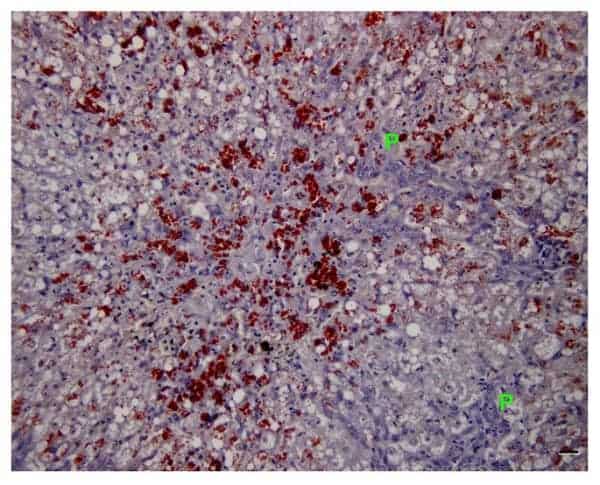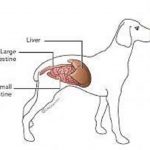What is copper storage disease?

this condition
Copper is an essential nutrient needed in small amounts by your pet’s body for energy production, antioxidant defense, connective tissue formation, and many other processes.
Your pet gets their needed copper through their diet and water. Copper is ingested by your dog, absorbed in the small intestine and transported by the blood to the liver where it is stored until needed elsewhere.
What is not absorbed in the small intestine is removed through the feces. While a small amount of copper is important for your dog’s body, too much is toxic and damages the tissues. In copper storage disease, excessive amounts of copper accumulate in the liver due to the inability to get rid of it, or too much in the diet, or both.
Which dogs get copper storage disease?
This disease occurs in dogs and is uncommon in cats. Humans have a version called Wilson’s disease. Certain dog breeds are genetically predisposed or are suspected of being predisposed to it. The average age of diagnosis is 7 years old, but dogs as young as 2 have been diagnosed. Both female and male dogs can have this disease.
Breeds that are predisposed:
- Bedlington terrier
- West Highland white terrier
- Skye terrier
- Doberman pinscher
- Labrador retriever
- Keeshond
- American cocker spaniel
Symptoms:
There is not one specific sign of copper storage disease. Because there are no definitive signs, it is usually diagnosed while running bloodwork for other reasons.
- Loss of appetite and weight loss
- Abdominal pain and vomiting
- Reduced activity level
- Jaundice- yellowing of the whites of the eyes
- Diarrhea
- Increased thirst
- Increased urination (peeing)
Diagnosis

affected liver
Bloodwork performed by your veterinarian may show values that indicate liver compromise, which occurs in copper storage disease. Blood clotting requires certain factors made by the liver. In some diseases that damage the liver these factors are reduced, causing a change in blood clotting (coagulation) tests.
The only definite way to diagnose the disease is a biopsy of the liver tissue. Here are the ways copper storage disease can be diagnosed by your veterinarian:
- Physical examination
- Bloodwork including complete blood count and chemistry
- Blood coagulation test to check liver function
- Urinalysis to look for another cause of the pet’s poor health
- Serum bile acids to access liver function
- Liver biopsy to look for copper in the liver tissue sample
Treatment
There are two goals of copper storage disease treatment: remove the excess copper from your dog’s body, and prevent future excess copper consumption. Therapeutic copper-restricted diets decrease the amount of trace copper consumption. Your dog will need to be on this specialty diet lifelong.
To remove the excess copper, cheating agents are medications that bind the excess copper in your pet’s system and help remove it from the liver by letting it by bound and excreted in the urine. In some cases, diet alone is sufficient to control signs, while others may need additional therapy with chelating agents.
Your pet’s health will be monitored during treatment by rechecking bloodwork and liver biopsies and your veterinarian can help you decide which therapy is best. Left untreated, your dog’s liver function will progress to irreversible damaged. Treating early and continuing with lifelong therapy has a good prognosis. Lifelong monitoring of your dog’s health by your veterinarian is important.


